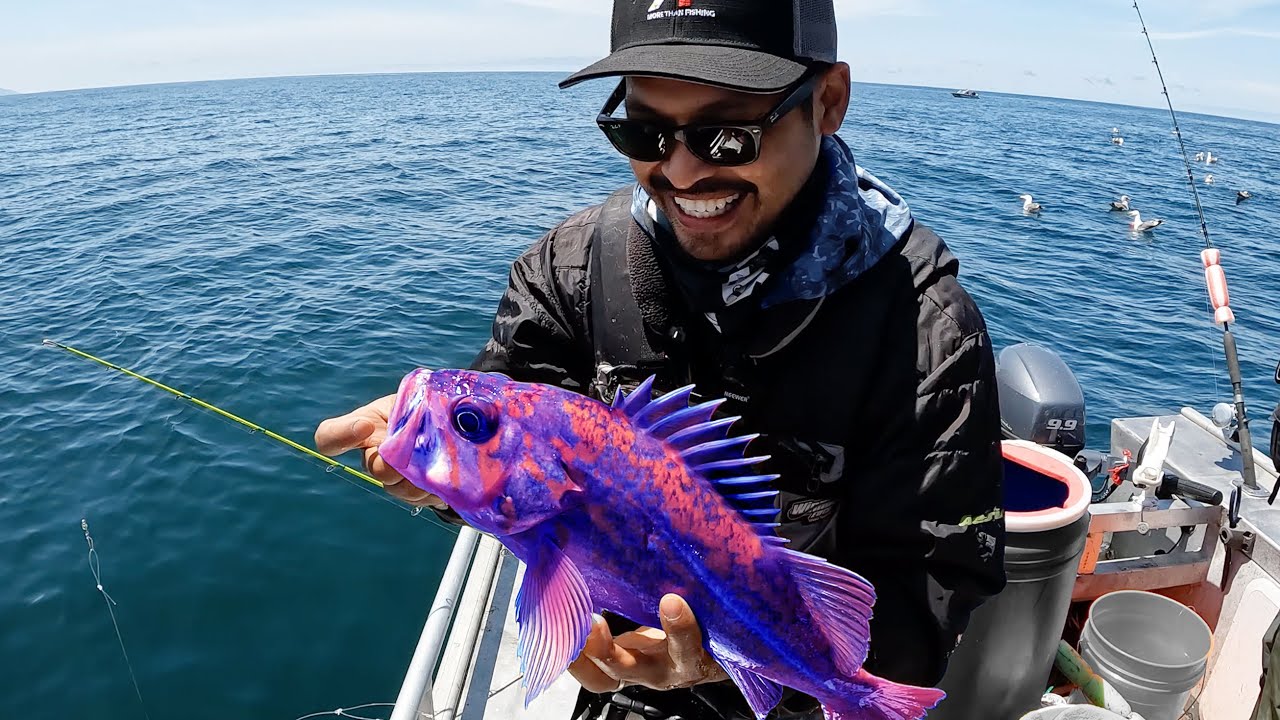Deep-sea fishing is one of the most exciting and rewarding outdoor activities for anglers, offering the chance to fish in the open ocean, far from shore, in search of large, prized fish species. Unlike traditional fishing, which typically occurs in shallow waters like rivers, lakes, or bays, deep-sea fishing takes place in the vast, deep waters of the ocean, often hundreds of feet below the surface. Whether you’re a seasoned fisherman or a beginner, deep-sea fishing presents a thrilling challenge that combines skill, patience, and a sense of adventure.
In this article, we’ll explore the world of deep-sea fishing, including its history, equipment, popular fish species, techniques, and tips for beginners. Whether you’re planning a charter trip or looking to learn more about this exciting sport, deep-sea fishing offers an unforgettable experience.
What is Deep-Sea Fishing?
Deep-sea fishing, also known as offshore fishing, involves catching fish in the deeper, open waters of the ocean, typically beyond the continental shelf, which is where the sea floor drops steeply to greater depths. The fishing takes place in waters that are usually over 100 feet deep and can extend to several thousand feet.
The appeal of deep-sea fishing lies in the types of fish that can be found in these deep waters. Unlike shallow-water fishing, which typically targets smaller fish, deep-sea fishing offers the opportunity to reel in much larger and more challenging species, including marlin, tuna, swordfish, and shark. These species are known for their strength, size, and speed, making deep-sea fishing an exciting and often physically demanding experience.
History of Deep-Sea Fishing
The origins of deep-sea fishing can be traced back to the late 19th and early 20th centuries, when advancements in fishing technology made it possible to fish in deeper waters. Prior to this, most fishing activities were limited to coastal regions or shallow bays.
The invention of motorized boats and the development of more advanced fishing equipment, such as strong lines and rods, enabled fishermen to venture farther from shore into deeper waters. The popularity of deep-sea fishing grew in the 1920s and 1930s as sport fishing became a recreational activity among wealthy individuals, particularly in tropical and subtropical regions.
In the 1950s, deep-sea fishing became a popular activity worldwide, with the rise of fishing charters and guided expeditions. Today, it remains a favorite pastime for millions of anglers, and numerous competitions and tournaments are held globally, drawing participants who seek to land the biggest and most prized catches.
Popular Fish Species in Deep-Sea Fishing
One of the main attractions of deep-sea fishing is the variety of fish species that can be caught. Some of the most sought-after species include:
1. Marlin
Marlin are one of the most iconic and highly prized fish in deep-sea fishing. Known for their impressive size and incredible speed, marlin can grow to over 14 feet long and weigh more than 1,000 pounds. There are several types of marlin, including blue marlin, black marlin, and striped marlin. Catching a marlin is a dream for many anglers, as it requires significant skill and endurance.
2. Tuna
Tuna, especially the bluefin tuna, is another favorite among deep-sea anglers. These fish are not only large but also fast swimmers, making them a thrilling challenge for those looking to test their fishing abilities. Tuna can grow up to 12 feet long and weigh over 1,000 pounds. Yellowfin tuna and bigeye tuna are also popular species targeted in deep-sea fishing expeditions.
3. Swordfish
Swordfish are known for their long, sharp bills and are one of the most sought-after game fish in deep-sea fishing. These fish can grow up to 10 feet in length and weigh as much as 1,500 pounds. Swordfish are nocturnal hunters and are often found at depths of over 2,000 feet, making them challenging to catch.
4. Shark
Sharks, including species like the great white, tiger, and hammerhead, are often targeted in deep-sea fishing. These powerful predators can grow to enormous sizes, with some species weighing several tons. Catching a shark requires strong equipment and careful handling, as they can be dangerous both during the catch and while being released.
5. Sailfish
Sailfish are known for their stunning dorsal fins, which resemble sails, and their impressive speed. They are one of the fastest fish in the ocean and can reach speeds of over 60 miles per hour. Sailfish are often sought after in sport fishing due to their agility and the thrill of the chase.
Equipment Used in Deep-Sea Fishing
Deep-sea fishing requires specialized equipment that is designed to handle the demands of fishing in deep waters with large, powerful fish. Here are some key pieces of equipment you’ll need:
1. Fishing Rods and Reels
Deep-sea fishing rods are typically longer and sturdier than standard rods, built to withstand the stress of battling large fish. They are usually made from materials such as fiberglass, carbon fiber, or graphite. The reel is another crucial part of the setup, with many anglers using large, durable reels with high drag systems to control the fight with big fish.
2. Fishing Line
The fishing line used in deep-sea fishing is often made from strong materials such as braided line, which provides greater strength and sensitivity. In deep-sea fishing, you may use line that can withstand weights of up to 100 pounds or more, depending on the species you’re targeting.
3. Hooks and Baits
The type of hook and bait you use will depend on the species you’re targeting. Common baits include live fish (like mackerel or squid), cut bait, or artificial lures. Some fish, such as marlin, may prefer larger baits, while others, such as tuna, might go for smaller, more lively offerings.
4. Tackle Box and Gear
A well-stocked tackle box is essential for keeping your hooks, lures, leaders, and other equipment organized and easily accessible. Additional gear such as gaffs (for landing large fish), fish finders, and harpoons are also commonly used.
5. Safety Equipment
Safety is paramount when fishing in the open ocean. Life jackets, marine radios, flares, and first-aid kits are essential to ensure the safety of everyone on board.
Techniques in Deep-Sea Fishing
Deep-sea fishing involves a variety of techniques, each suited to different species and fishing conditions. Some of the most popular techniques include:
1. Trolling
Trolling is one of the most common methods used in deep-sea fishing. It involves towing baited lines or lures behind a boat as it moves through the water. This method covers a large area and is effective for catching species like marlin, tuna, and mahi-mahi.
2. Bottom Fishing
Bottom fishing involves dropping baited hooks to the ocean floor to catch fish that dwell at greater depths, such as snapper, grouper, and halibut. This technique requires heavy weights and specialized equipment to get the bait to the desired depth.
3. Drift Fishing
In drift fishing, the boat drifts with the current while fishing lines are cast out at different depths. This method is commonly used to target fish species that are spread out across a large area, like swordfish or tuna.
4. Live Bait Fishing
Using live bait is an effective method for attracting larger fish, such as marlin and sailfish. The natural movements of the live bait can draw the attention of predatory fish.
Tips for Beginners in Deep-Sea Fishing
If you’re new to deep-sea fishing, here are some helpful tips to ensure you have a successful and enjoyable experience:
- Choose a Good Charter: For beginners, booking a fishing charter with an experienced captain is a great way to learn the ropes. They will provide all the necessary equipment, guide you on technique, and increase your chances of catching fish.
- Stay Patient: Deep-sea fishing can require long hours on the water, so patience is essential. Fish don’t always bite quickly, but with persistence, you may be rewarded with a big catch.
- Learn to Read the Water: Understanding water conditions and the location of fish is critical. Pay attention to factors such as water temperature, currents, and the presence of marine life, which can indicate the presence of fish.
- Respect the Ocean: Always follow local regulations and practice responsible fishing. Catch and release is a common practice in sport fishing to ensure the sustainability of fish populations.
Conclusion: The Thrill of the Deep Sea
Deep-sea fishing offers an exciting and challenging experience that takes anglers far from shore to explore the depths of the ocean in search of huge, powerful fish. Whether you’re after marlin, tuna, swordfish, or sharks, the sport provides a unique opportunity to test your skills and enjoy the beauty and thrill of the open sea. With the right equipment, knowledge, and patience, deep-sea fishing is an adventure that can create lasting memories and a lifelong passion for the sport.





